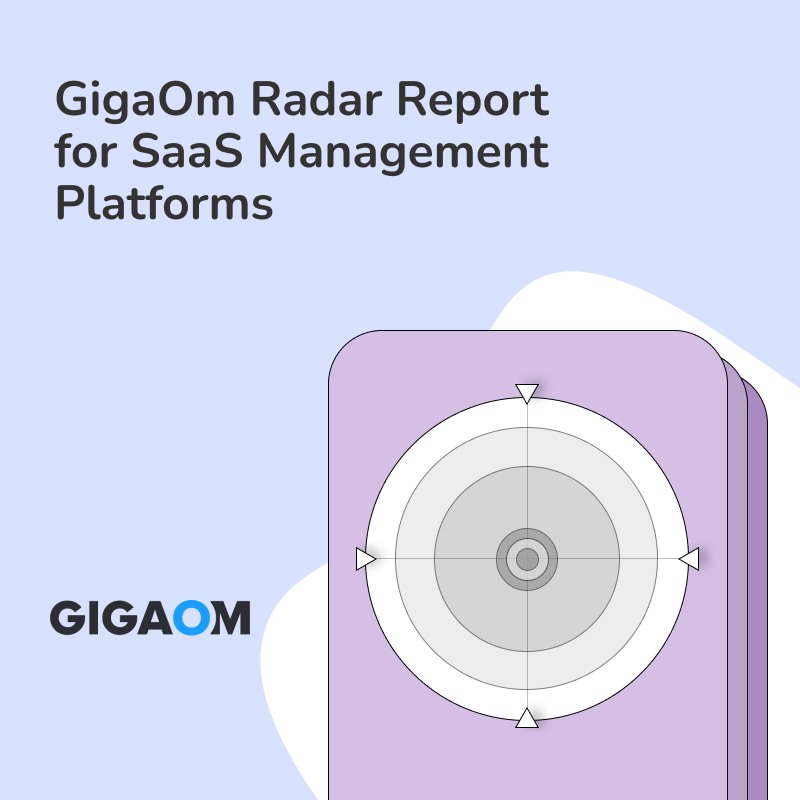An ITSM Platform, or IT Service Management Platform, is a comprehensive tool allowing IT teams to manage, deliver, and even automate IT services. It’s a way for technology teams to ensure that IT operations are seamlessly aligned with the needs and objectives of the business.
Note: Are you drowning in a sea of IT tasks? Are you struggling to meet demands while maintaining quality service for your organization? Partner with Torii’s reliable automated application lifecycle management integrated with ITSM. Streamline IT operations, regain control, and sail smoothly toward efficiency and success. Learn more about SaaS Management.
Isn’t ITSM solely focused on addressing tickets and managing complaints? Not merely. ITSM solutions go far beyond the simplistic scope of your average IT service desk. They incorporate ITIL practices for service level management, asset management, and change management, streamlining ITSM implementation and ITSM automation.
Meanwhile, ITSM reporting and ITSM governance establish a framework for rule compliance, performance metrics, and best practices, informed by compelling ITSM case studies. Therefore, these platforms are not just tools but strategic assets aiding incidents, problems, release management, and more.

Examples of ITSM Platforms
- ServiceNow: This robust ITSM tool offers a multitude of IT services. Notably, its AI capabilities excel at automating routine tasks and predicting issues.
- BMC Remedy: Known for its multi-channel support and visual reporting, Remedy is a favorite among large enterprises.
- Zendesk: A user-friendly platform, Zendesk caters to small and medium-sized businesses (SMBs), delivering a straightforward ticketing system.
- Jira Service Management: Favored in agile environments, it offers seamless integration with other Atlassian products.
- Torii: Beyond traditional ITSM, Torii handles SaaS management efficiently, tracking software use and optimizing spend. Consider this for hybrid ITSM and SaaS needs.
Best Practices for ITSM Platform
- Invest in IT Service Management Software
Starting on the right foot, choose robust ITSM tools that fit your organization’s needs. Consider features like ITSM automation, effective service request management, and comprehensive incident, problem, and change management.
- Establish ITIL Practices
Apply ITIL (IT Infrastructure Library) practices to align ITSM with your business needs. ITIL guidelines provide a structured service management approach, covering asset and release management processes.
- Plan for ITSM Implementation
ITSM solution implementation requires careful planning. Sketch out your current processes, identify areas for improvement, and develop a timeline for implementing changes.
- Automate Service Requests
Use service request management features in ITSM tools to automate repetitive tasks, like ticket sorting and routing. This pares down manual processes, easing the load on your IT service desk.
- Streamline Incident and Problem Management
Prioritize seamless incident management to handle unplanned interruptions and problem management to analyze recurring issues.
- Manage Changes Effectively
Incorporate change management practices to ensure systematic handling of changes, mitigating associated risks.
- Optimize Asset Management
Compelling ITSM platform features for asset management allow for intelligent investment planning, licensing compliance, and reduction of IT waste.
- Navigate Release Management
Leverage your ITSM solution for release and deployment management processes, ensuring updates and changes are released properly and successfully.
- Monitor Service Level Management
Use service-level management practices to create a shared understanding between IT and customers regarding service expectations.
- ITSM Integration
Ensure your ITSM platform integrates seamlessly with other tools in your IT ecosystem. Tools such as the Torii SaaS Management Platform can help automate SaaS operations and provide visibility over SaaS expenditures.
- Analyze ITSM Reporting
Built-in ITSM reporting tools monitor service delivery efficiency, workload, and performance. Measure against your service level management objectives for continuous improvement.
- Establish ITSM Governance
Create a governance structure for your ITSM practices. Set clear roles, responsibilities, and processes to ensure alignment with business objectives.
Applying these best practices will set you on the right path to effectively utilizing your ITSM tools. If you need to scale your SaaS operations, consider using Torii. It can help you discover Shadow IT, automate SaaS operations, and provide essential insights for better action and decision-making.
Related Tools for ITSM Platform
- ServiceNow: A comprehensive platform designed for IT service management, ServiceNow offers a range of tools and functionalities to streamline and automate various IT processes.
- Jira Service Management: Provides tools for incident management, problem management, change management, and service request fulfillment
- Torii: An AI-powered SaaS Management Platform tailored to help organizations manage their subscriptions efficiently by providing insights into usage, spending, and compliance.
- SysAid: Encompasses features such as incident management, asset management, service desk, and remote control, providing a centralized platform for managing IT services and support efficiently.
- Ivanti: Helps organizations streamline IT operations, improve service delivery, and enhance overall IT governance through automation, analytics, and optimization tools.
Related Concepts in ITSM Platform
ITSM Platform is a big topic, and to help you dive deeper, here are five critical terms to get you started:
- Incident management: Managing and resolving any disruption in IT services to minimize user impact.
- Change management: The practice of controlling and tracking changes made to IT systems, ensuring they are planned and implemented smoothly.
- Service catalog: A centralized directory of IT services offered to users, providing clear descriptions, availability, and pricing information.
- Problem management: Identifying root causes of recurring incidents and implementing solutions to prevent future occurrences.
- SLA: Service Level Agreement, a contract between service providers and customers defining the quality and availability of the IT services provided.
FAQs: ITSM Platform
Q: What is an ITSM platform?
A: An ITSM platform is a software solution that helps organizations manage their IT service delivery and support effectively.
Q: What are the benefits of using an ITSM platform?
A: By using an ITSM platform, organizations can streamline their IT operations, improve service quality, enhance customer satisfaction, facilitate better collaboration, and achieve greater efficiency in managing IT services.
Q: What features should I look for in an ITSM platform?
A: Important features to consider in an ITSM platform include incident management, problem management, change management, asset management, service catalog, knowledge base, and reporting capabilities.
Q: How does an ITSM platform improve service delivery?
A: An ITSM platform improves service delivery by automating processes, providing a centralized hub for managing and resolving incidents, enabling self-service options, and facilitating efficient communication and collaboration among IT teams.
Q: Is an ITSM platform suitable for small businesses?
A: Yes, an ITSM platform can also benefit small businesses. It helps them organize their IT operations, improve service delivery, and effectively manage their IT assets, leading to better productivity and customer satisfaction.






